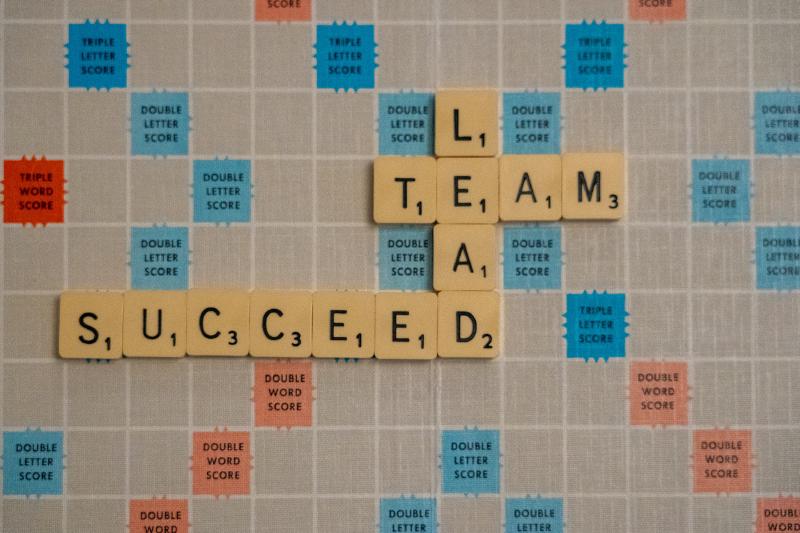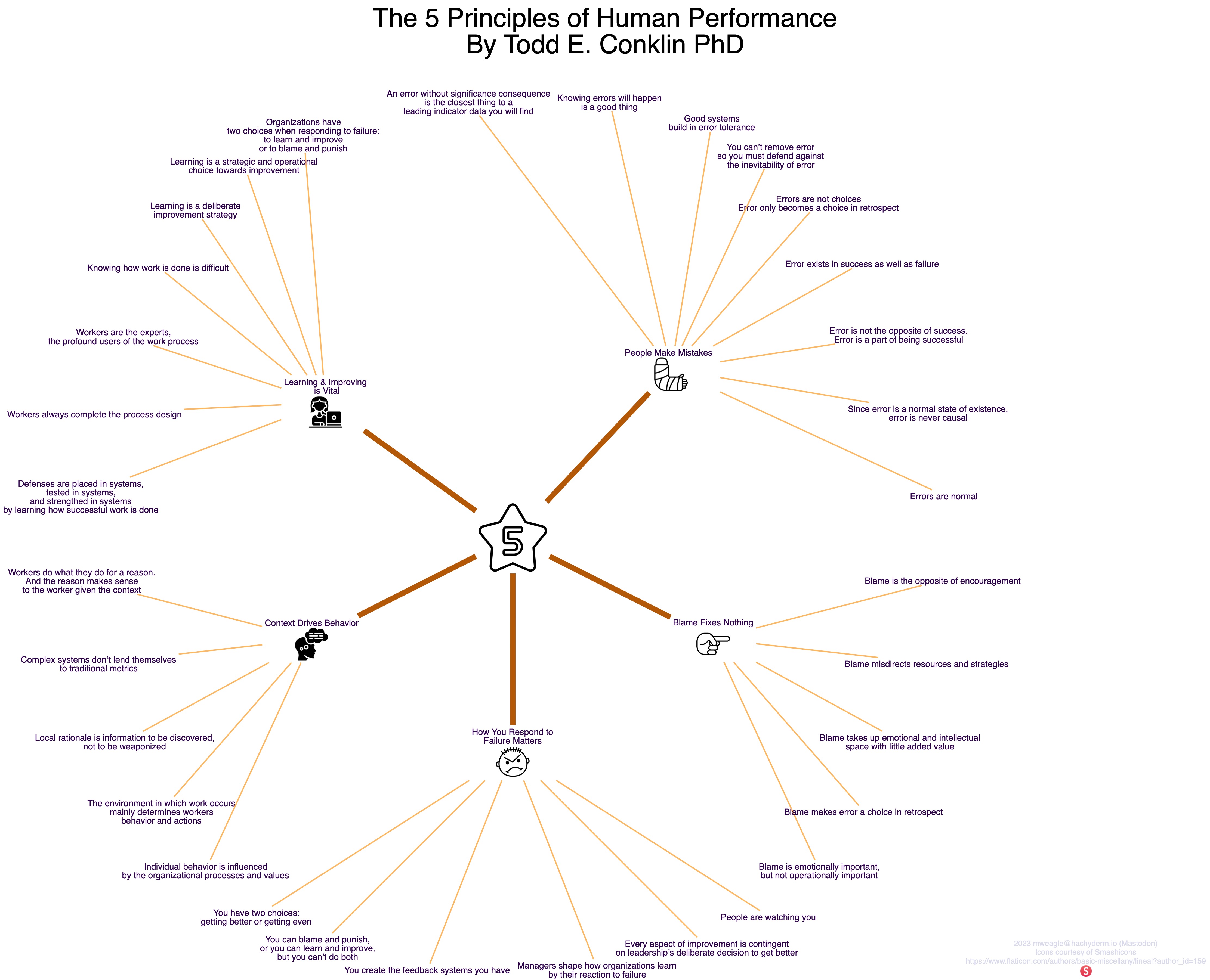Five Principles Visualization
Todd Conklin is the host of the recommended PreAccident Investigation Podcast and recently published a book titled The 5 Principles of Human Performance. It’s an excellent introduction to high-performing organizations and the New View of Safety. To learn more, please visit Lorin Hochstein’s Github repo of resiliency papers.
In the meantime, I’ve distilled Todd’s Five Principles into a single visualization below:
I’ve also created PDF and SVG versions. The SVG version doesn’t include the dotfile PNG references. I’m not sure what the issue is there.
Raw Text
The full raw text of the visualization is posted below. Thanks to Geoff Baskwill for the recommendation!
- Five Principles of Human Performance
- People Make Mistakes
- Errors are normal
- Since error is a normal state of existence, error is never causal
- Error is not the opposite of success. Error is a part of being successful
- Error exists in success as well as failure
- Errors are not choices. Error only becomes a choice in retrospect
- You can’t remove error so you must defend against the inevitability of error
- Good systems build in error tolerance
- Knowing errors will happen is a good thing
- An error without significance consequence is the closest thing to a leading indicator data you will find
- Learning And Improving
- Organizations have two choices when responding to failure: to learn and improve or to blame and punish
- Learning is a strategic and operational choice towards improvement
- Learning is a deliberate improvement strategy
- Knowing how work is done is difficult
- Workers are the experts, the profound users of the work process
- Workers always complete the process design
- Defenses are placed in systems, tested in systems, and strengthed in systems by learning how successful work is done
- Context Drives Behavior
- Workers do what they do for a reason. And the reason makes sense to the worker given the context
- Complex systems don’t lend themselves to traditional metrics
- Local rationale is information to be discovered, not to be weaponized
- The environment in which work occurs mainly determines workers behavior and actions
- Individual behavior is influenced by the organizational processes and values
- How You Respond to Failure Matters
- You have two choices: getting better or getting even
- You can blame and punish, or you can learn and improve, but you can’t do both
- You create the feedback systems you have
- Managers shape how organizations learn by their reaction to failure
- Every aspect of improvement is contingent on leadership’s deliberate decision to get better
- People are watching you
- Blame Fixes Nothing
- Blame is emotionally important, but not operationally important
- Blame makes error a choice in retrospect
- Blame takes up emotional and intellectual space with little added value
- Blame misdirects resources and strategies
- Blame is the opposite of encouragement
- People Make Mistakes
References
Attributions
Photo by Nick Fewings on Unsplash.

